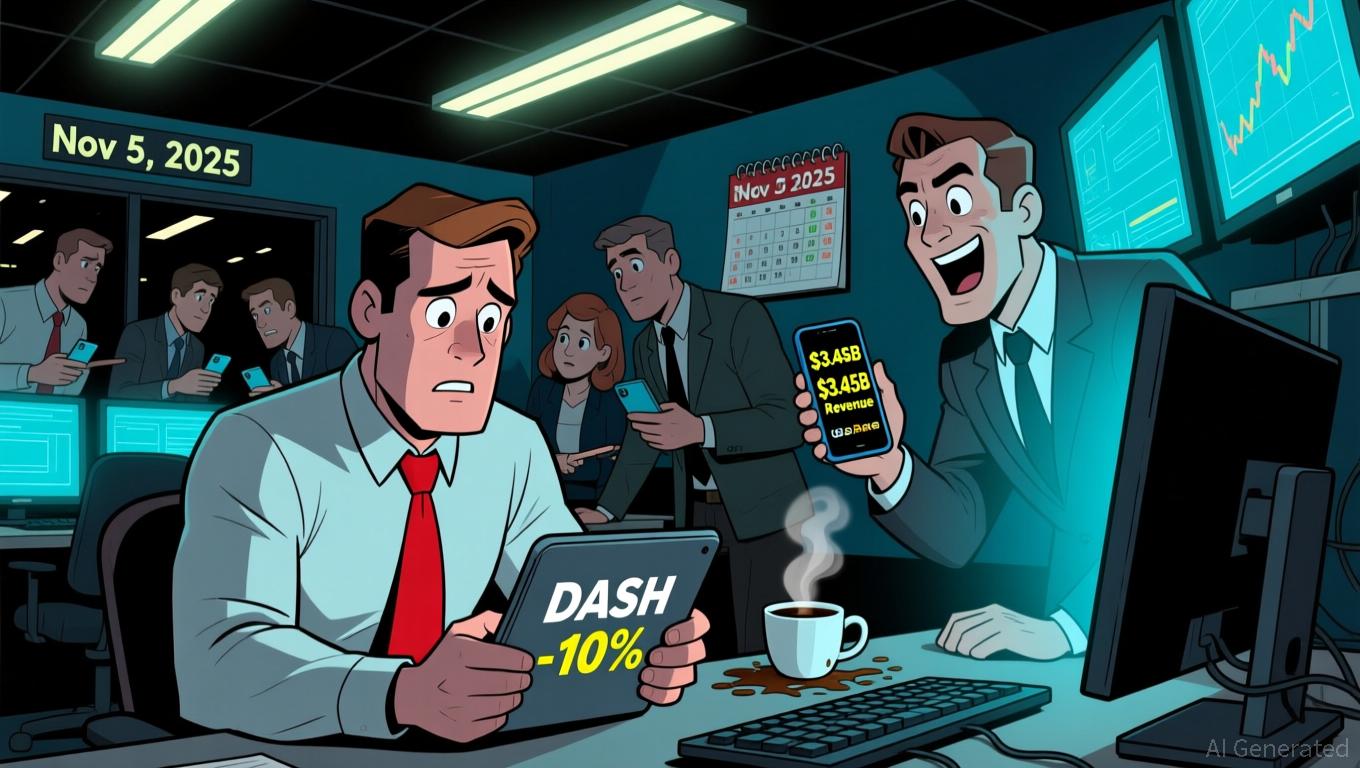Bitcoin Updates: 2028 or 2035? The Ongoing Quantum Era Discussion on Bitcoin’s Longevity
- Experts warn Bitcoin's ECC-256 encryption could be cracked by quantum computers by March 2028, per the Quantum Doomsday Clock's 2.3-year threshold projection. - Breaking Bitcoin's cryptography requires 1,673 logical qubits, achievable through exponential qubit growth and error-rate improvements by 2027-2028. - Industry responses include BTQ's quantum-safe Bitcoin implementation and IBM's 2029 fault-tolerant quantum computer, while governments advocate 2035 migration timelines. - The timeline debate highl
The impending impact of quantum computing on
The main risk stems from Bitcoin’s dependence on elliptic curve cryptography (ECC-256), which can be broken with just 1,673 logical qubits using Shor’s algorithm. In contrast, decrypting RSA-2048 and RSA-4096 would require 2,314 and 3,971 logical qubits, respectively. These numbers, based on surface code error correction, assume error rates between 10^-3 and 10^-5—levels that recent progress in quantum error mitigation suggests may be attainable within the predicted timeframe, as detailed in the BeinCrypto analysis.
Charles Edwards, the analyst who brought attention to the countdown, underscored the seriousness: "If quantum isn’t addressed for Bitcoin by then... we’ll be in serious trouble," he cautioned. This timeline matches current trends in qubit development, such as Google’s 53-qubit Sycamore chip in 2019 and forecasts of more than 6,000 qubits by late 2027, as mentioned in the TradingView report. Still, the assumptions behind the project—especially the rapid scaling of hardware and error reduction—have faced criticism. Agencies like the U.S. National Security Agency (NSA) and the UK’s National Cyber Security Centre (NCSC) suggest a more cautious timeline, advising post-quantum transitions by 2035, according to a
The financial implications are significant. With Bitcoin’s market value at $2.5 trillion and the privacy it provides, both could be jeopardized if quantum computers reach the necessary scale. Older Bitcoin wallets that use pay-to-public-key (P2PK) or reused pay-to-public-key-hash (P2PKH) addresses are especially at risk, since these reveal public keys on the blockchain. Meanwhile, the network’s hash-then-reveal mechanism offers a short-term safeguard for standard P2PKH wallets, which only disclose public keys during transactions.
The industry is responding with urgency.
Some critics contend that the Quantum Doomsday Clock’s ambitious schedule is influenced by marketing interests for post-quantum solutions rather than a consensus within the scientific community. A 2021 study by Gidney and Ekerå, often cited by skeptics, calculated that factoring RSA-2048 would demand 20 million physical qubits at a 10^-3 error rate—a scale far beyond what is currently possible. Nevertheless, supporters like Dr. Richard Carback and Colton Dillion, who created the clock’s model, argue that quantum advancements are happening more rapidly than anticipated.
With the deadline approaching, the Bitcoin ecosystem faces a crucial decision: either move swiftly to adopt post-quantum security measures or risk falling behind. Now that NIST’s FIPS-203 and FIPS-204 standards are finalized, the necessary tools for these upgrades are available. Experts point out that the main challenge is economic—balancing the expense of migration against the potential cost of inaction.
Disclaimer: The content of this article solely reflects the author's opinion and does not represent the platform in any capacity. This article is not intended to serve as a reference for making investment decisions.
You may also like
XRP News Today: Mastercard’s Blockchain Initiative: Regulated Networks Set to Transform International Payments
- Mastercard explores $1.5B-$2B acquisition of MiCAR-licensed crypto infrastructure firm Zerohash to expand Web3 capabilities. - Partners with Ripple to pilot RLUSD stablecoin for credit card settlements on XRP Ledger, enabling instant cross-border transactions. - Zerohash's regulatory compliance and $1B valuation align with Mastercard's strategy to bridge traditional finance and blockchain infrastructure. - RLUSD's NYDFS-backed growth and XRP Ledger integration could reshape global payments while reinforc
DoorDash Shares Drop 10% as Focus on Growth Reinvestment Outweighs Earnings Outperformance
- DoorDash's stock fell over 10% post-earnings despite $3.45B revenue beat, driven by 25% GOV growth and 21% order increase. - Management signaled $300M+ 2026 AI/tool investments and revised Deliveroo's EBITDA contribution down by $32-40M due to accounting changes. - Analysts cut price targets (Wells Fargo to $239) as $754M adjusted EBITDA (up 41%) was overshadowed by reinvestment concerns despite $723M free cash flow. - 42% YTD gains amplified sell-off sensitivity, with 31 analysts retaining "Moderate Buy

Savers Confront a Choice: Lock in Safe 5% Returns or Chase DeFi's Tempting 12%
- Fed rate cuts in 2025 spurred high-yield savings accounts offering up to 5.00% APY, outpacing traditional banks' 0.40% average. - DeFi platforms like ZEROBASE and Maple Finance offer 12-7% APY on stablecoins, but require higher risk tolerance and short liquidity periods. - Banks may reduce APYs if further Fed cuts occur, while FDIC-insured high-yield accounts remain popular for inflation protection. - Alternative assets like Bitcoin and dividend stocks (e.g., Viper Energy's 3.49% yield) show growing comp

Bitcoin News Update: Institutions Remain Wary as Retail Investors Drive Crypto Innovation—The Battle for Dominance Escalates
- Bitcoin fluctuates near $110,000 amid ETF outflows and revised institutional price targets, with long-term holders creating resistance through strategic BTC distributions. - Ethereum and XRP show resilience with ETF inflows and whale activity, while emerging projects like Remittix ($27.8M raised) and Noomez gain traction through innovative tokenomics. - Analysts remain divided: some see $120,000 potential if Bitcoin breaks key averages, while others warn of $72,000 corrections amid macroeconomic uncertai
